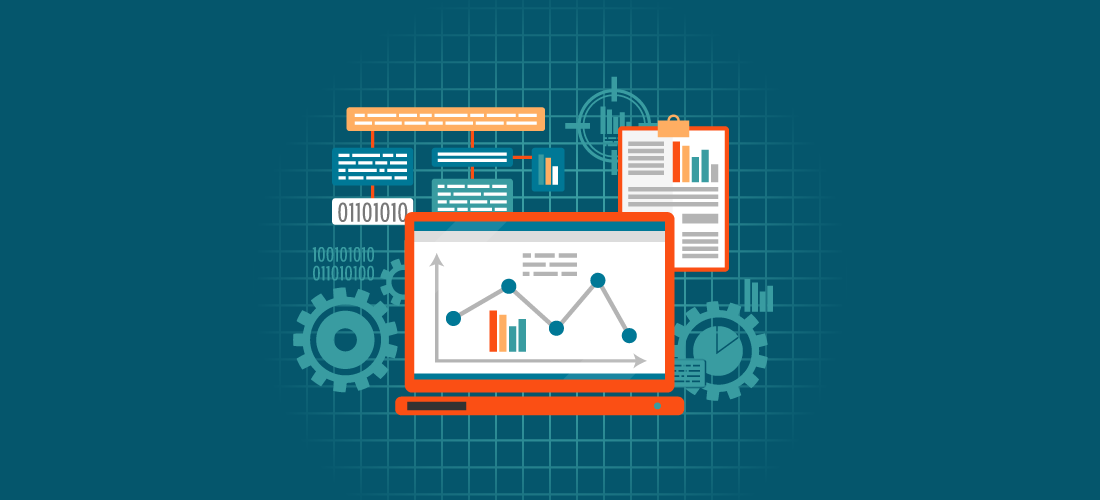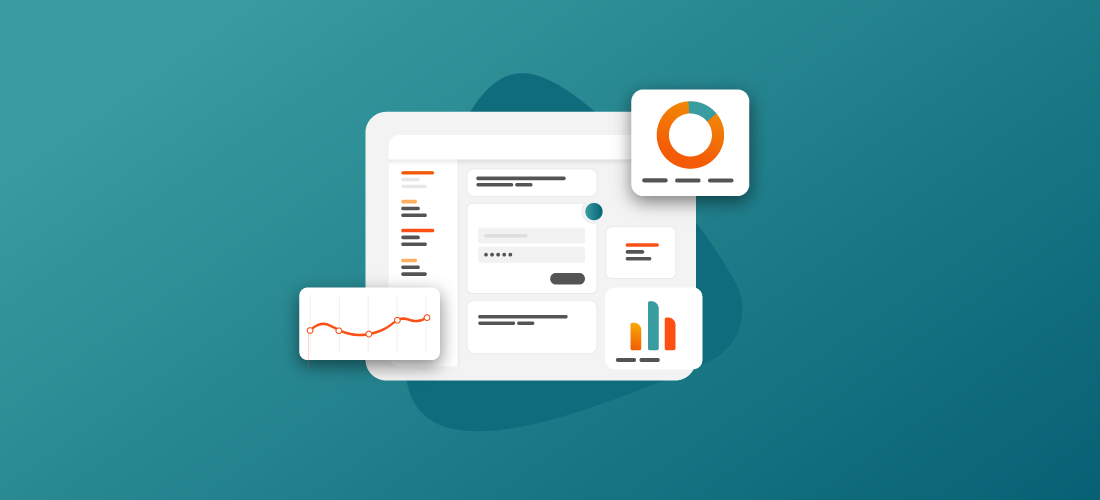What is a data marketplace and how does it work?
What is a data marketplace?
How is a data marketplace used and maintained?
What are the types of data marketplaces?
Some organizations create data marketplaces to promote high-value data use for internal data consumer use only, while others share data products externally with partners and customers or to facilitate monetization objectives.
Internal data marketplaces
Internal (or private) marketplaces are concentrated on raising the visibility and usage of data assets. They make it easy for organizations to share high-value, trusted data across the enterprise, enable consumers with self-service capabilities, and make sure governance is in place for how data is used. In addition, they can help organizations to realize some of the following benefits:
- Improvements to operational effectiveness
- Better decision making
- Enhanced partner relationships
- Launching of new products and services
- Introduction of new revenue streams
External data marketplaces
External (or commercial) marketplaces are focused on directly monetizing data assets and data products with external parties. The external marketplaces can be used to:
- Enhance existing products and services
- License and sell data to consumers or third parties
- Barter and trade data with business partners
- Exchange data for discounts or other commercial benefits
Regulations from both industry and government forbid the sale or disclosure of customer data containing personally identifiable information, however, businesses can legally leverage that data in a few ways. A couple of examples include using the data to offer supplementary products and services to their customers or, if the data possesses significant value, it could be used as collateral when securing a business loan.
Should you start with an internal or external data marketplace?
Several factors affect the choice of whether to start with an internal marketplace, an external one, or both.
Businesses operating in heavily regulated sectors often choose internal marketplaces initially, prioritizing the advantages of providing governed data more efficiently to their internal data users.
Conversely, in industries with fewer regulatory constraints, while internal marketplaces remain advantageous, external marketplaces are increasingly prevalent.
How important are data marketplaces?
For data consumers, data marketplaces enable them to easily find, gain access to and put to use the highest value data available for their particular use case without needing to additionally prep or consolidate data assets for analysis.
For organizations, these marketplaces provide a governed way to guide their data consumers to trusted data, packaged data products and AI models along with guidance on their use.
Two recent analyst studies highlight the importance and business impact of data marketplaces.
According to the West Monroe 2023 Data Monetization and Marketplace Study, enterprise data monetization efforts are driving an increase in marketplace adoption and the payback is significant. This study found that organizations who use both internal and external marketplaces get a threefold return on investment and are twice as likely to outperform their peers.
Additionally, in the 2023 State of Data Intelligence Analyst Report, Enterprise Strategy Group (ESG) found that in organizations with a self-service data marketplace, users are twice as likely to be able to access the data they needed within one hour than users without a self-service marketplace. Further, 79% of organizations that have a self-service marketplace believe that it has a significant or game-changing impact on the efficiency and innovation of their data users.
What are the benefits of a data marketplace ?
Beyond the significant benefits listed above, here are some additional benefits that organizations realize from the use of data marketplaces.
Adds credibility to your data with automated data value scoring
When low-quality data is used for analysis, organizations receive unreliable insights. In a data marketplace, automated data value scoring evaluates data quality, freshness, governance, and user feedback, providing valuable insights for decision-making. Data scoring and monetization breathe life into data, making it measurable and accessible within the marketplace. Various parameters can be used to score data, including data quality, relevance, timeliness, scarcity, lifecycle, criticality, certification, user ratings, and popularity.
Enables multiple use cases with support for internal and third-party data
Data marketplaces vary across organizations. While some exclusively include governed internal data, others provide access to live, ready-to-use data from external third-party providers. Certain marketplaces even feature “clean rooms” with stringent governance for trusted data redistribution, allowing users to explore and compare different datasets. The core mission of a marketplace is to offer self-service, authenticated data products for analytical communities, ensuring safe delivery within privacy and regulatory boundaries, regardless of the specific use case.
Additional advantages of housing third-party data
Managing third-party data in a data marketplace has some extra practical advantages besides making it easier for data consumers to find data and the implied validation that comes with housing it in an organization’s own marketplace. Third-party data subscriptions can be pricey and putting them all in one marketplace makes it less likely that the same datasets will be purchased more than once. Housing them internally also means you can make sure that your own data governance guidelines and processes are followed. Lastly, it lets you leverage all the built-in features of your data marketplace, such as data value scoring, user ratings feedback, and other capabilities, to make sure that only high-value, trusted data is used.
Accelerates the time to value of data products
The development of data products can be automated and streamlined by leveraging a model to marketplace approach that combines data modeling and data catalog automation with data marketplace capabilities. To fulfill their needs, data consumers no longer need to develop business requirements and then communicate and refine them with a lineup of analysts, designers, developers and DBAs. They now can access a marketplace to find available data products that meet their needs and if a suitable data product is not found, they can use built-in automation to request a new data product and have it delivered.
Monitors AI data and model drift
AI models often operate as black boxes, lacking transparency. To build trust, organizations must understand the model’s intent, the business problem it addresses and the critical decisions it influences. Data marketplaces can provide a central location and the curation and governance capabilities to manage and monitor AI models, and the training datasets they rely upon, that are in use throughout your organization. Supporting data lineage and profiling can provide clarity around training data by revealing data sources, transformations and supporting data quality. Further use of data observability capabilities can additionally help in the monitoring of AI models for drift and bias. By combining automated data catalog, data quality and data marketplace capabilities, organizations can harmonize the entire use case surrounding AI models from business intent to related data product requests to monitoring drift and sharing results across the enterprise to quickly address any needed corrections.
erwin Data Marketplace
What best practices apply to data marketplaces?
Here are some important best practices related to the establishment and governance of data marketplaces:
Focus first on the potential value to your organization
The ultimate purpose of a marketplace is to enable data users with high-quality data so they can generate insights that benefit the business. So, plan to start with a few key use cases that are prioritized by the potential results to your business.
Have a strong data management foundation in place
Investing in data governance, data design, and data management aims to yield intelligent, comprehensive, and highly trusted business insights. To achieve this, successful outcomes from a data marketplace hinge on three critical factors: data discovery, data quality and data literacy.
Users must quickly be able to locate relevant datasets and assets to address their challenges. Trustworthy analysis also relies on well-described, vetted, and profiled data. And finally, users need context to understand how data is used and the guardrails that ensure accuracy.
While organizations may claim data ownership and curation, it’s essential to assess whether critical data has been profiled, if data lineage is established, and if guidelines exist for data usage. Ultimately, a robust data management foundation fortifies valuable and practical analysis.
Measure your organizational data maturity
Organizations can assess data maturity by continuously benchmarking it against value use cases in a seven-step program. This approach enables teams to achieve early and frequent returns from their data marketplace efforts. Examples include finding leaks of personally identifiable information (PII), identifying data bloat, and root cause analysis and remediation for specific issues.
What are the required capabilities needed for an effective data marketplace?
To have an effective data marketplace, you will need many of the following core capabilities:
Easy discovery and analysis
Enable data users to rapidly discover and select enterprise data products, datasets and AI models for potential use by browsing and analyzing available and governed options in a consumer-like discovery experience. Features that help to deliver this experience include dynamic filtering, automated data value assessment, social ratings and reviews, and on-screen supplementary data insights like mind maps, data lineage, and governance guidelines.
Helpful data and model comparisons
Compare the most suitable governed enterprise data by seeing their properties and ratings aligned side-by-side just as you do with online shopping sites. This process helps in understanding and making the final selection more effectively.
Automated data value scoring
Take advantage of data intelligence such as data quality scoring, data user ratings and reviews and assessment of governance curation completeness to automate the generation of a data value score that can help point consumers quickly to the highest value data available for their purpose.
Crowdsourced user ratings and reviews
Allow data users to share their knowledge of marketplace products by giving them a rating system and the chance to leave social reviews. This will help all your data users to better understand and zero-in on useful assets quickly.
Built-in collaboration capabilities
Provide multiple ways to communicate and collaborate around assets within the marketplace with automated workflow, task and chat capabilities. Enable the routing of questions, issues, data access requests and other tasks to data stewards and owners and more easily connect data consumers and data governance teams.
Asset curation and stewardship
Support the curation and sharing of available data products, datasets and AI models for business use from a single, central location. Define datasets and models and establish links to technical assets (systems, columns, tables, files, etc.). Assign relevant enterprise tags, data classifications, and who is responsible for governance.
Data access governance
Data access requests from data users can be recorded and forwarded to data owners with the help of automated task and workflow capabilities. Governance teams can review, accept, or reject requests while recording decisions and actions made for future use in audits and compliance reports.
Role-based publishing
When publishing new marketplace offerings in the data marketplace, indicate roles and user groups that might be interested based on access rights.
Audit history
Examine a continuously updated audit of all curated datasets and models. See how all related governance actions, including data access requests, are evaluated and implemented.
Blogs

Start to Monetize Your Data with Data Marketplaces and Data Value Scoring

Building data maturity: 7 steps to achieve data maturity and maximize data value

